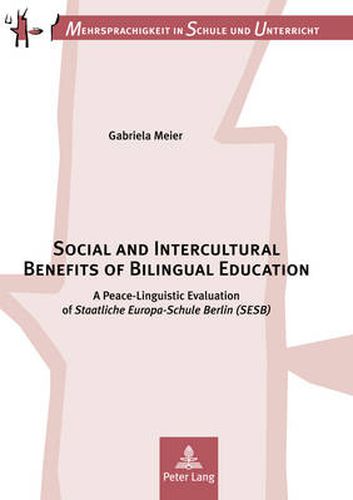Readings Newsletter
Become a Readings Member to make your shopping experience even easier.
Sign in or sign up for free!
You’re not far away from qualifying for FREE standard shipping within Australia
You’ve qualified for FREE standard shipping within Australia
The cart is loading…






Is two-way immersion education associated with social and intercultural benefits? This book examines social and intercultural benefits of bilingual or two-way immersion (TWI) schooling in Staatliche Europa-Schule Berlin (SESB). The author uses quantitative methods to compare SESB with mainstream education and identifies a series of statistically significant differences between the two. These findings contribute to the well-structured argument that SESB programmes can play a role in promoting social integration and group cohesiveness within schools and potentially in the wider society. The author also makes a number of recommendations for stakeholders and policymakers, and suggests that SESB may indeed serve as a useful model for other multilingual areas of Europe.
$9.00 standard shipping within Australia
FREE standard shipping within Australia for orders over $100.00
Express & International shipping calculated at checkout
Is two-way immersion education associated with social and intercultural benefits? This book examines social and intercultural benefits of bilingual or two-way immersion (TWI) schooling in Staatliche Europa-Schule Berlin (SESB). The author uses quantitative methods to compare SESB with mainstream education and identifies a series of statistically significant differences between the two. These findings contribute to the well-structured argument that SESB programmes can play a role in promoting social integration and group cohesiveness within schools and potentially in the wider society. The author also makes a number of recommendations for stakeholders and policymakers, and suggests that SESB may indeed serve as a useful model for other multilingual areas of Europe.